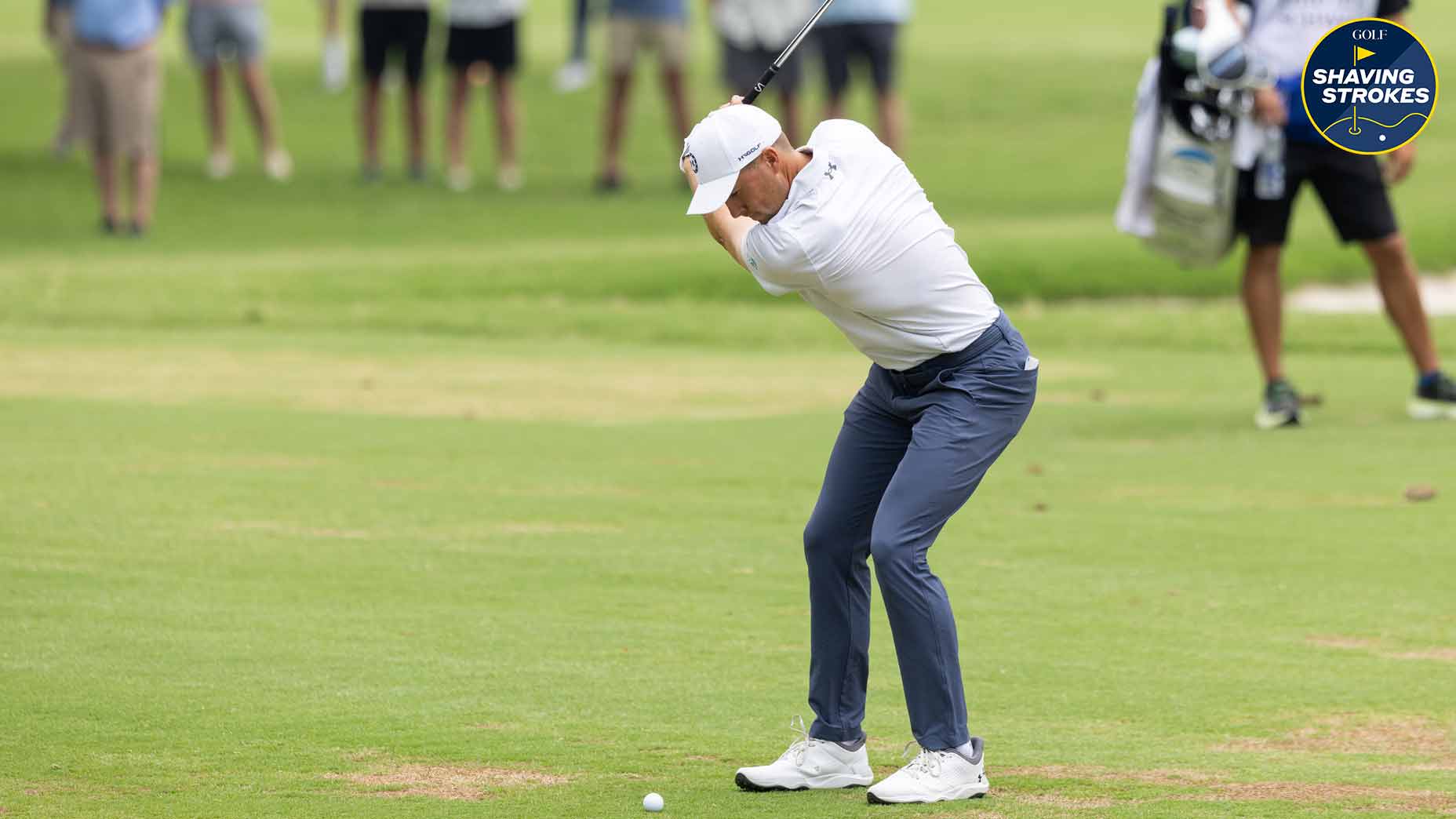Welcome to Shaving Strokes, a GOLF.com series in which we’re sharing improvements, learnings and takeaways from amateur golfers just like you — including some of the speed bumps and challenges they faced along the way.
There are so many key elements in the golf swing that an often overlooked piece is where the head position should be. But if you’re among the amateurs who only focus on things like rotation, width in the backswing and where the trail arm should be — and not head position — you’re doing yourself a disservice.
After all, Jack Nicklaus actually went as far as to say that understanding head position in the golf swing is “the most important thing” when it comes to hitting good shots.
“Keep your head right there, dead still,” Nicklaus said. “Feel as though there’s a shaft right down through your head and you just keep it right there and revolve around that area.”
Where should your head position be in the golf swing? Use this guide
While it’s important to understand head positioning in golf, we all know that it varies from shot to shot, meaning it’s in a different spot when using you’re driver compared to when you’re chipping.
But where’s the ideal spot for every shot type? GOLF Top 100 Teacher Kevin Sprecher delivers a go-to guide below to help you out.
1. Full swing (driver)
With the golf ball positioned farthest forward, your head position will be behind it. Avoid excessive rearward spine tilt or shifting too much weight onto the trail foot, and allow your head to move back slightly in the backswing and then forward during the transition into the downswing. Additionally, some backward movement at impact can assist in swinging up on the ball, especially with the driver’s wider stance and faster swing speed.
2. Full swing (irons, hybrids, fairway woods)
Start with your head positioned behind the ball at setup. As you go into your backswing, it may move back slightly, but it should re-center by impact before moving over the lead foot in the finish.
3. Bunker shots
Keep your head on or slightly in front of the ball, and avoid hanging back in the downswing to prevent fat or thin shots. This can be a common problem for many amateur golfers, who tend to try and scoop when hitting from the sand — which causes them to lean back and throw off their head position in the golf swing.
4. Pitch shots
Similar to hitting from the bunker, you’ll want to keep your head either centered over the ball or just slightly forward, maintaining most of your weight on the front foot. As you go into your backswing, you should feel as if you’re on top of the ball, letting your head follow the movement of your body into the downswing.
5. Chip shots
To help promote a steeper angler of attack on chip shots, position your head just slightly in front of the golf ball. Similar to other short-game shots, keep the weight on your lead foot and avoid dropping your head back during the swing to prevent against chunking or skulling.
6. Putting
Keep your head steady and centered, avoiding any excessive movement during your entire swing axis. A good trick to see if you’re doing this is by practicing in front of a mirror or watching your shadow, which helps ensure consistency.
Maintaining the proper head position in the golf swing will significantly impact both your shot consistency and accuracy. So practice each one of these positions to get the feel you need in order to make better ball contact.
Sure-Strike Training Aid by Sure Golf
Sure-Strike
The golf swing trainer designed to help you master your swing mechanics to swing like a Tour Pro!
The Sure-Strike is not just another training aid; it’s a game-changer. This new golf swing trainer is meticulously crafted to instill perfect swing mechanics, creating a permanent shift in your performance. Say goodbye to inconsistent swings and hello to a new level of precision and power.
Key Benefits of the Sure-Strike Training Aid
Transform your timing for solid contact and an efficient swing.
Improve swing path and attack angle for optimal ball-then-turf contact and true compression at impact.
Enhance swing sequence, ensuring perfect coordination between body, arms, and club.
Train a shallow swing plane for true lag and increased clubhead speed.
Experience freedom and effortlessness in your swing, unlocking your natural athleticism.
Suitable for golfers of all skill levels.
Crafted with precision and durability in mind.
Elevate your golfing experience and unleash your true potential.
With the Sure-Strike, you’ll experience a transformation in your timing, resulting in solid contact with the ball and an overall more efficient swing. This training aid focuses on improving the path of your swing and attack angle, allowing you to find the ideal low point and achieve that coveted ball-then-turf contact. The result? True compression at impact and a newfound level of control over your shots.
One of the key benefits of the Sure-Strike training aid is its ability to enhance the sequence of your swing, ensuring that your body, arms, and club work together in perfect harmony throughout the entire motion. By training in efficient transition, impact, and follow-through, you’ll experience a level of consistency and fluidity you’ve only dreamed of.
The Sure-Strike empowers you to feel and train a shallow swing plane, leading to true lag and a powerful impact. This shallow plane not only promotes better contact with the ball but also generates greater clubhead speed, resulting in longer and more accurate shots. Feel the satisfaction of hitting crisp, penetrating shots that soar through the air with ease.
By incorporating the Sure-Strike golf training aid into your training routine, little and often, you’ll witness a remarkable improvement in your range of movement. This swing trainer helps you achieve a feeling of freedom and effortlessness in your swing, unlocking your natural golf swing and allowing you to unleash your full potential on the course.
Crafted with precision and built to last, the Sure-Strike is your trusted partner for transforming your golf game. It is easy to use and suitable for golfers of all skill levels, even for kids with the junior version. Practice with confidence and witness the evolution of your swing.
Invest in the Sure-Strike today and elevate your golfing experience to new heights. Experience the joy of a consistent, efficient, and powerful swing that brings your game to a whole new level. Order now and unleash your true golfing potential!
FAQs About the Sure-Strike
Do Swing Trainers Actually Work?
Yes! Golf swing trainers, like the Sure-Strike, teach you how to swing consistently while giving you instant feedback on your swing mechanics. Enough practice over time will build muscle memory that will translate to the course.
How Do I Train My Golf Swing?
In today’s age, there are an infinite number of ways to improve your golf swing. Golf training aids and repetition are some of the most popular and effective methods to improve your swing and your game overall.
View Product












